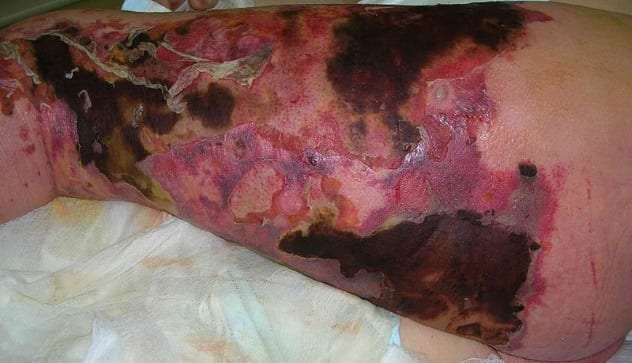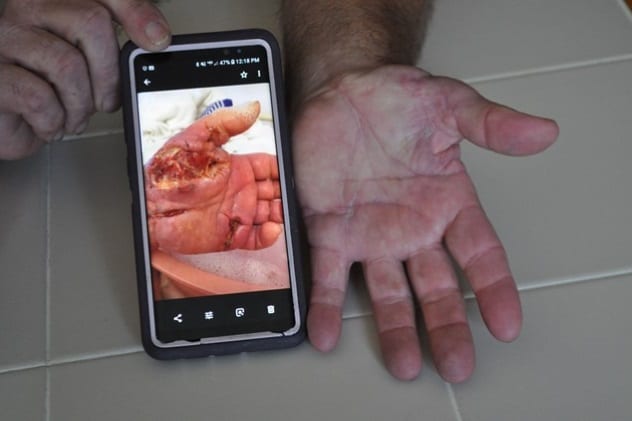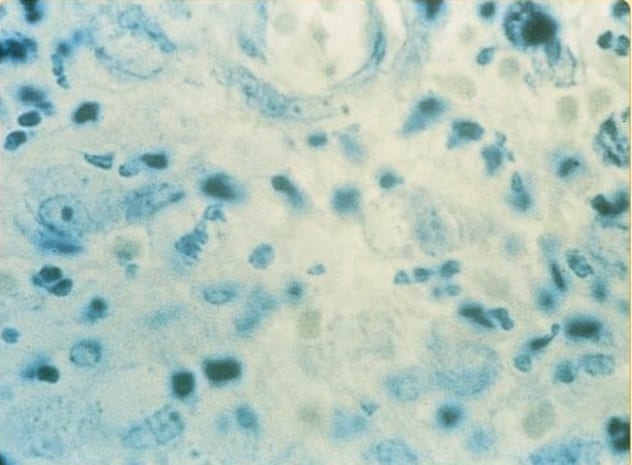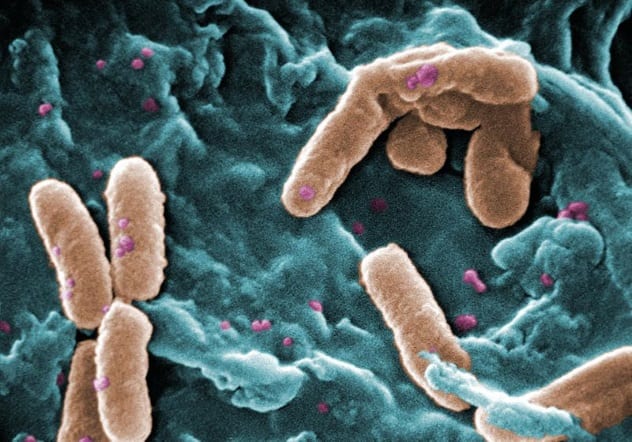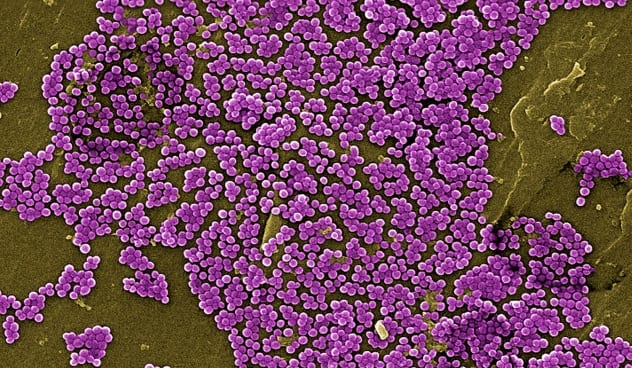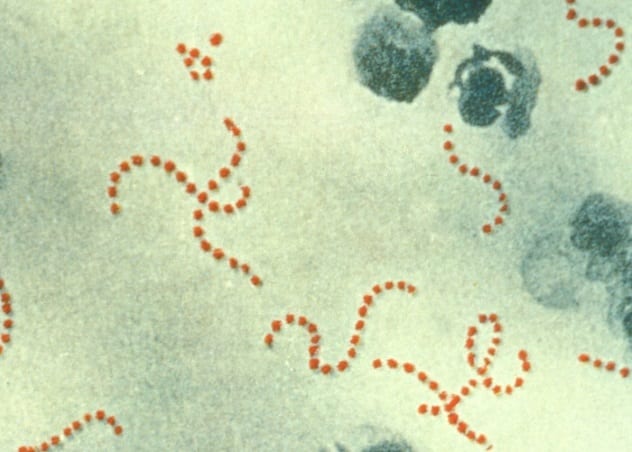The world of pathogens is a strange world indeed, and there are some pretty nasty critters out there that would love nothing more than to take a bite out of your flesh—and sometimes bone. Some pathogens hijack the minds of their human hosts, controlling their behavior, their thought patterns, and even their actions. Others lodge themselves inside you and consume you from the inside out. Here are ten nightmarish flesh-eating pathogens and their destructive ways.
10 Necrotizing Fasciitis
Necrotizing fasciitis deserves an honorable mention here at the top of the list, as it’s the result of several infections on this list. Necrotizing fasciitis is caused by the presence of pathogens which cause the skin to rot, especially when they become entrenched into the inner layers of the flesh. If it isn’t treated right away, necrotizing fasciitis can kill you, with anywhere from 25 to 30 percent of the cases being fatal. Necrotizing fasciitis has earned the moniker “flesh-eating disease,” which is quite the terrifying name. While the infections that cause it vary, the pathogens don’t literally eat the flesh but rather excrete toxins that destroy tissue, causing the condition.[1] Drug and alcohol users as well as diabetics and those who are immunocompromised are particularly at risk for necrotizing fasciitis.
9 Vibrio Vulnificus
Vibrio vulnificus is often found in a place that’s a perfect climate for the bacterium to grow and also possesses the large bodies of water which it likes to flourish in: Florida. A person can become infected either by going into the water with an open cut or wound or consuming undercooked or uncooked seafood, as it lives and thrives in salt water. Vibriosis, the disease spawned from the Vibrio genus of bacteria, can be fatal. It should be noted, as alluded to above, that V. vulnificus causes the flesh to rot rather than eating it, but that difference is quite irrelevant when you see chunks of your arm missing. Even more terrifying is that V. vulnificus not only attacks the surface flesh but can bury itself and get underneath the top layer of tissue. It can even seep in and cause the internal organs to rot away and even eventually shut down. Sometimes, people lose limbs to the disease.[2] Again, the immunocompromised are much more likely to contract this flesh-rotting bacterium, as well as people with liver problems. The Centers for Disease Control in the United States suggests not eating raw or undercooked fish if you’re trying not to catch this, and 80 percent of cases come between May and October, when the water is warmer, so these are the best times to avoid the water to avoid the disease.
8 Donovanosis
Donovanosis, also known as granuloma inguinale, is a disease that comes from the bacterium Klebsiella granulomatis. It’s relatively new on the scene, and it may very well be the scariest thing on this list. Why? Because it’s an STD. That’s right, donovanosis is a flesh-eating STD.[3] The bacteria can destroy the flesh in, around, or on the genitals and can do more damage if they spread to other parts of the body. The damage to the exterior flesh can cause large, red, vascular lesions, and these holes in your flesh bleed. This disease typically makes its initial home at sites in and around the pelvis but can work its way up inside of you and get into your organs, damaging them, too. If that wasn’t bad enough, in extreme cases, Klebsiella granulomatis can get into your bones as well if not treated promptly. Fortunately, the treatment is rather simple, with broad-spectrum or targeted antibiotics. But imagine waking up one day to find your genitals and the surrounding areas slowly rotting—even if it’s treatable, this is a day that nobody wants to see.
7 Pseudomonas Aeruginosa
Pseudomonas aeruginosa is a bacterium that grows pretty much everywhere and on pretty much everything, though it doesn’t always infect us—instead, it waits for an opportune opening, such as a cut or scrape, and when the conditions are just right, it will seep into the wound and multiply. P. aeruginosa can cause necrotizing fasciitis. The good news is that healthy people generally have a very low risk of becoming infected by this particular bacterium, but as is often the case, those who have immune system deficiencies can experience problems with it.[4] If left untreated, Pseudomonas aeruginosa can reach the internal organs and cause death. If left alone, it will eat all the way down to the bone. As with other Pseudomonas species, some of the more severe cases invole infections in the blood or the lungs. What’s really the most terrifying thing about Pseudomonas is the fact that many strains of it have developed antibiotic resistance and are quite difficult to treat, meaning that P. aeruginosa could eat away at you while doctors attempt to find an antibiotic regimen that will work to eliminate the bacteria.
6 Staphylococcus Aureus
Yes, as freaky as it sounds, the common staph infection can become necrotic and flesh-eating. Methicillin-resistant Staphylococcus aureus (MRSA) is Staph aureus with additional antibiotic resistance, making infections rather difficult for modern medicine to treat. Fortunately, not all cases of staph and MRSA turn into flesh-eating necrosis, but doctors can’t actually tell which strains and cases will eventually turn into a condition that eats away at the flesh, so it’s better to treat all situations involving these bacteria as if they were about to become necrotic.[5]Staph aureus and its antibiotic-resistant counterpart both present with a nasty, thick pus which can get deep into the skin, working its way into muscles and ultimately into the bloodstream—once these infections seep into the blood, a powerful and brutal sickness ensues, and death is a likely possibility. On top of that, if the condition brings about necrotizing fasciitis, you’ll have some serious decay and blackening of the tissue layers as the excreted toxins from the bacteria wreck havoc.
5 Naegleria Fowleri
Naegleria fowleri is an amoeba that severely affects the brain on the rare occasion that it inhabits a human host—these dangerous critters love to hang out and reproduce in fresh water, making them ample under the right climate conditions, though they need to travel up the nose and into the brain in order to “hijack” your mind. How do they do that? By reproducing and spreading quickly and then slowly eating away at your brain, that’s how. Under certain conditions, the amoeba just forms into a cyst that’s inactive and doesn’t do much of anything, but when conditions become right, they become active and begin to feed. The Centers for Disease Control says about the mechanism of death from this particular amoeba: “The infection destroys brain tissue causing swelling and death.”[6] This is definitely not a fun pathogen to catch by any stretch of the imagination.
4 Clostridium Perfringens
Clostridium perfringens is another nasty one. It can be found in soil, water, and the human intestinal tract. This bacteria can cause a specific kind of gangrene called gas gangrene, and it definitely does not at all look very fun. The toxins which are excreted by the bacteria travel through veins, blood vessels, and other bodily systems, and they kill off the flesh inside of the body by poisoning it.[7] This causes massive distention, huge pockets of bloating gas that come from the bacteria feeding and releasing of gasses inside the body. Massive bulbs of purple and red swelling show up on the outside of the body as the internal gasses protrude and push outward.
3 Streptococcus Pyogenes
Possibly the best-known cause of necrotizing fasciitis is Streptococcus pyogenes, also referred to as “Group A Streptococcus.” This bacterium also causes strep throat, which many people, even in the developed world where antibacterial everything is prevalent, end up catching at one point, often as children. Like the others on this list, Streptococcus pyogenes produces toxic byproducts which cut through tissue layers of fat, muscle, and skin like butter. This infection starts off rather mild, most commonly presenting as a sore throat, but it can progress and eat away at the tissue of the infected and even cause toxic shock syndrome, a condition that comes with headache, nausea, vomiting, and much more and is also definitely no fun to get. While most cases of strep throat don’t turn into “the flesh-eating disease,” some of them do, and the effects can be both long-term and devastating.[8] This happens when the body’s immune response isn’t quick or powerful enough to fight off the invasive strep, and the results can be deadly. Yes, the common strep throat can actually eat your flesh until you die.
2 E. Coli
Escherichia coli is a relatively well-known bacterium which is often responsible for the common food poisoning we all miserably endure every so often. This is the usual E. coli infection, and it’s nothing to shake a stick at, but sometimes, E. coli can go above and beyond the usual case of what we know of as “food poisoning” and become catastrophically worse. As with most bacteria, the body’s immune system as well as antibiotics have fought off the invaders for a very long time, causing variations in the strains which possess radically different traits and can have radically different outcomes upon infection. Some strains of E. coli can cause the death and decay of the skin cells also as they slowly eat away at your flesh. These strains prey upon people with limited or suppressed immune systems, which can’t fight off the infection—all cases in some studies have been fatal. A specific gene called the cnf1 toxin gene is possessed by the flesh-eating variations of E. coli, which causes them to emit a toxin which destroys flesh like an acid. Animal studies have shown that the presence of this gene in the bacteria causes the toxin to be excreted when animals are infected as well. These E. coli strains are the stuff that nightmares are made of.[9]
1 Mycobacterium Ulcerans
Mycobacterium ulcerans is a bacterium which is the cause of a disease called buruli ulcer, which causes, you guessed it, ulcers to appear within the skin. But much more than this, buruli ulcer is also a flesh-eating condition. Prolonged infection will cause ulcers on the arm and legs typically, and the chunks of flesh which have been eaten away will usually worsen over time. Only ten percent of cases present with flesh-eating ulcers in other parts of the body outside of the limbs, but that’s still a scary ten percent. As the bacteria spread, they produce a toxin called mycolactone, which is responsible for the destruction of flesh in patients who’ve contracted the bacterial infection and allowed it to progress to the disease of buruli ulcer. Even more terrifying than having this bacterium secrete toxins which eat away at your flesh while you wait helplessly for it to go away, or for your treatments to work, is that beyond just skin, ligament, muscle, and other soft tissues, the disease can eventually spread down to the bone and begin to eat away at that, too.[10] And what’s even more nightmarish than that? They have no idea how this bacterium spreads. Very little is known about how M. ulcerans transmits from one person to the next, so we don’t really know what any of us can do to avoid becoming its next target—yet. Hopefully someday, science will develop methods to eradicate these bacteria as well as new and unique treatments, but for now, we’re stuck with limited knowledge and treatment options. I like to write about the dark, strange, macabre, and unusual.
